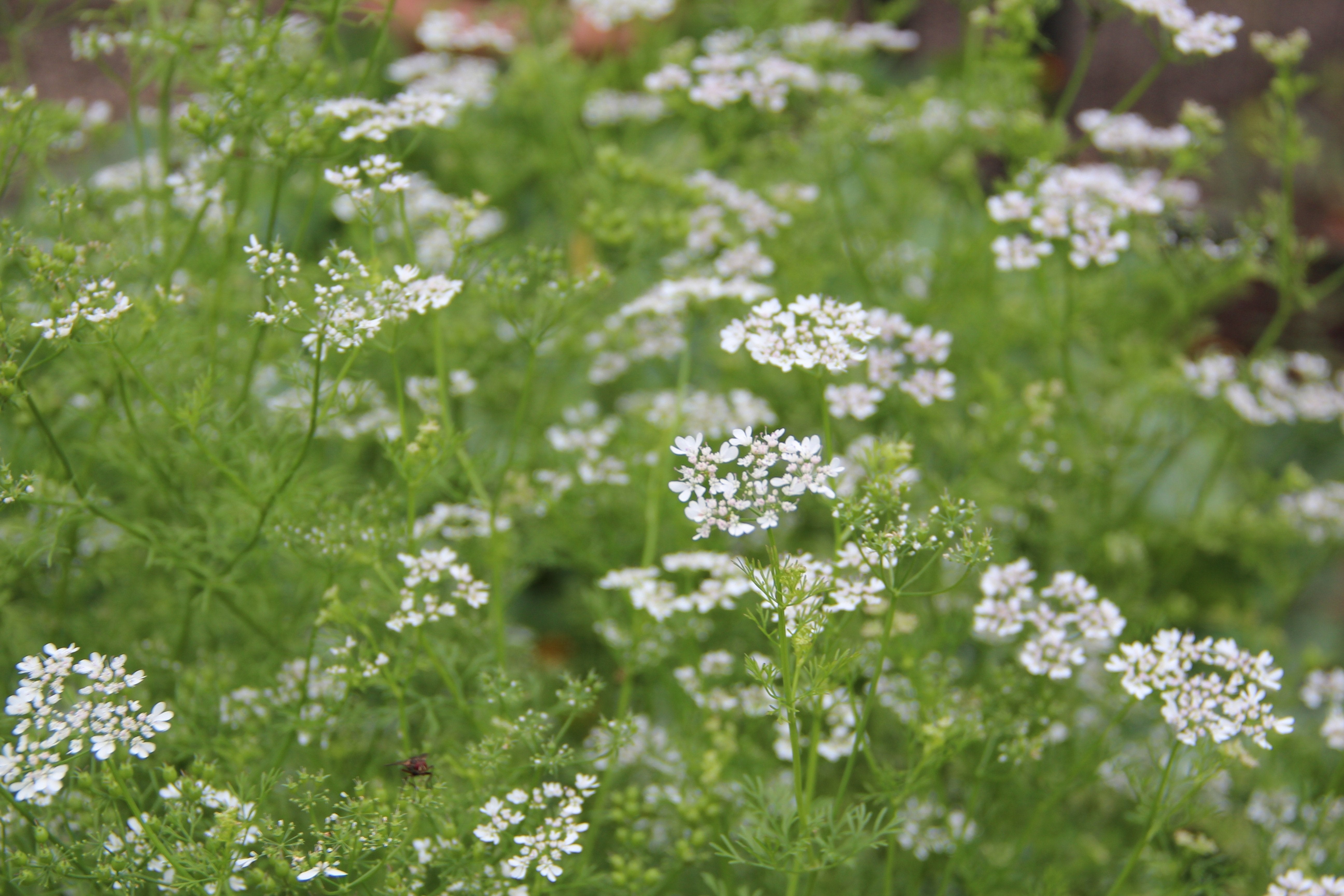Cilantro Bolting: The Gift to Your Garden
Did you ever try growing cilantro, only to have it bolt quickly and set seed? After all, the rap on cilantro is: “It just bolts.” So what! We say, let it bolt.
Cilantro is a great friend in the garden especially when we let it do its own thing, harvesting when we need and trusting that it’ll come back the next year. With its charms and its quirks, it’s a must-have near the kitchen door.
Growing Cilantro
Fresh cilantro leaves are so tender and full of flavor. They offer a certain je ne sais quoi to so many dishes that it’s noticeable when it’s missing! The flavor is more nuanced than parsley and while it’s not to everyone’s liking, when you do like it - you love it! Not to mention, cilantro is super easy to grow in the garden.
- Cilantro can be easily grown from seed and started indoors or sown directly outside.
- Cilantro is a cool weather crop that grows especially well in the spring or fall. When grown in warm weather, it will set seed very quickly.
- Cilantro needs full sun and soil rich in organic matter. Afternoon shade can be helpful to extend the harvest and spring warms up or in early fall.
- A regular application of nitrogen-rich, water-soluble fertilizer will help with the production of lucious leaves.
Have you ever heard of slow-bolting cilantro? Extend your season a little bit by trying this variety of cilantro that withstands heat better than its counterpart!
Understanding Cilantro Bolting
As the weather warms up, or if planted on the later side, cilantro can bolt pretty quickly! Because cilantro doesn’t love warm weather, the temperatures rising signal to the plant to set seed and get it over with - in other words, prioritize the survival of the species by spreading its genetics around the garden. While this can be frustrating because it cuts back on that green goodness, it’s actually something to celebrate!
Cilantro Bolting Tips
When cilantro bolts it puts out a proliferation of lovely, lacy white flowers. These are as nice as ornamentals, and the seeds, when broadcast in a flower bed will make for an excellent filler, and pollinators love them!
Watch your cilantro closely as it starts to put out small, round seed heads. If you wait too long, the seed heads will burst and spread the seed all around the garden (which we think is great too). But to take full advantage of cilantro’s second crop, collect the dried seed heads, also known as coriander, and use them in a wide variety of recipes. You can dry out the seeds on newspaper in a dry spot indoors or give them a little time in the dehydrator.
Alternatively, let them burst or toss them back into the garden bed! They’ll resprout once the temperatures have cooled off again starting the whole process over.
Quick Guide to Cilantro Bolting
- Cilantro is an easy-to-grow cool weather crop that will bolt when temperatures warm up.
- It sets beautiful white, lacy flowers that look great in a bouquet before the seed heads develop.
- Harvest the seed heads, also known as coriander, just as they’re starting to dry out and before they burst, spreading their seed around the garden.
- Dry the seeds indoors on a newspaper or with a short stint in the dehydrator.
- Coriander is used in lots of delicious dishes and is a wonderful second crop to cilantro - so celebrate your cilantro bolting!
Sow True Seed offers multiple varieties of cilantro seeds for your garden whether you plan to grow it for its’ luscious green leaves, gorgeous ornamental flowers or delicious seed heads! Learn to grow and discover new varieties at Sow True Seed.


|
Article Written by: Hannah Gibbons |
|
About the Author: Hannah Gibbons, an employee at Sow True Seed since 2020, has nearly a decade of experience in the agricultural industry. Their passion for environmental education and regenerative agriculture has been the cornerstone of their work, aimed at making gardening accessible to all. |


